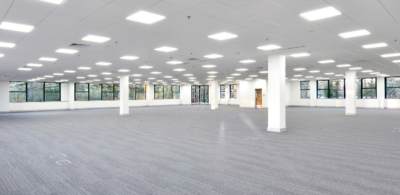Activity Based Working (ABW) is a flexible workplace that offers a variety of work settings, each supporting different activities. People are free to choose the most appropriate setting for the task at hand, and since people can work anywhere, the whole workplace is shared. ABW landed with an almighty thunk in Australia when Macquarie Bank opened their Shelley Street workplace in 2009. The influence of this project has been reverberating around Australian workplaces ever since and was amplified with later advances in mobile technology. Even government is starting to embrace the concept now.
Plus: A brief guide to density in the workplace | Four essentials for collaboration and innovation
So what have we learned about learned about ABW since 2009?
Also: The rebirth of retail? | How to read a commercial property survey
A lot of people hate the term.
Even when there is a desire to introduce ABW, a lot of people in management shy away from using the acronym. They call it an “agile workplace” or some other fancy name. When it’s not done properly there can be a lot of negative feedback, like “I can never find anyone,” or “people are inconsiderate and leave their coffee cups and other mess when they are finished,” or even “I don’t want to share someone else’s germ infected phone!” It’s enough to give ABW a bad name.
The problem of finding people can be overcome with strategies like creating neighborhoods and location software. As for the mess problem—well, people need to be more considerate! To avoid the issue of germs, people can carry around their own personal soft phone headset.
It requires constant maintenance.
People need to be reminded and trained regularly how to use their space. It’s OK to move away from a noisy person. Don’t hog a big meeting space for a one on one call and clean up after yourself!
Change management is the key to success.
Any change in the way people work needs to be managed. A good change management and communications plan is vital to the success of any new way of working. Leading from the top is vital. If the boss embraces a new way of working everyone else will follow.
It’s a natural consequence of new technology.
Most new workplaces have all the technology that you need for an ABW workplace. Wi-Fi throughout, a movement to paperless working and using dual screens, laptops, softphones etc. When you work with this technology you figure out pretty soon that it’s easy to work just about anywhere. You naturally seek out the right space for the task at hand. And that really is the essence of ABW. In fact most new workplaces are now designed as ABW workplaces whether they have assigned seating or free seating arrangements.
ABW doesn’t necessarily mean that nobody has their own desk anymore.
There are plenty of models where some people have assigned desks. Maybe the team assistant is the anchor point for a team neighborhood. Or a contact center has assigned seating because they are expected to be at their desk all day. It’s OK to have different departments with different desk sharing ratios.
Kids are being educated as if they will be working in ABW workplaces.
My 11 and 12 year old kids have already experienced ABW. Their class rooms have a variety of work settings and the technology to support a mobile way of working. They will probably expect their workplaces to be the same.
There is no one size fits all.
Over the past 7 years the way ABW workplaces have been implemented has changed. More organisations are basing their workplace decisions on extensive research and a deep understanding of how their people work. The most successful new workplaces are those that reflect the culture of an organisation and are designed based on real data.
As National Director of Workplace Strategy and Design for Colliers International in Australia, Peter is a workplace strategist and qualified architect with over 25 years’ experience in workplace and base building design, working with clients ranging from Bauer Media Group, AT Kearney, Ricoh, ANZ Bank and Citrix.

 Colliers Insights Team
Colliers Insights Team

 Aaron Jodka
Aaron Jodka
 Amber Merrigan
Amber Merrigan
 Andrew Steele
Andrew Steele